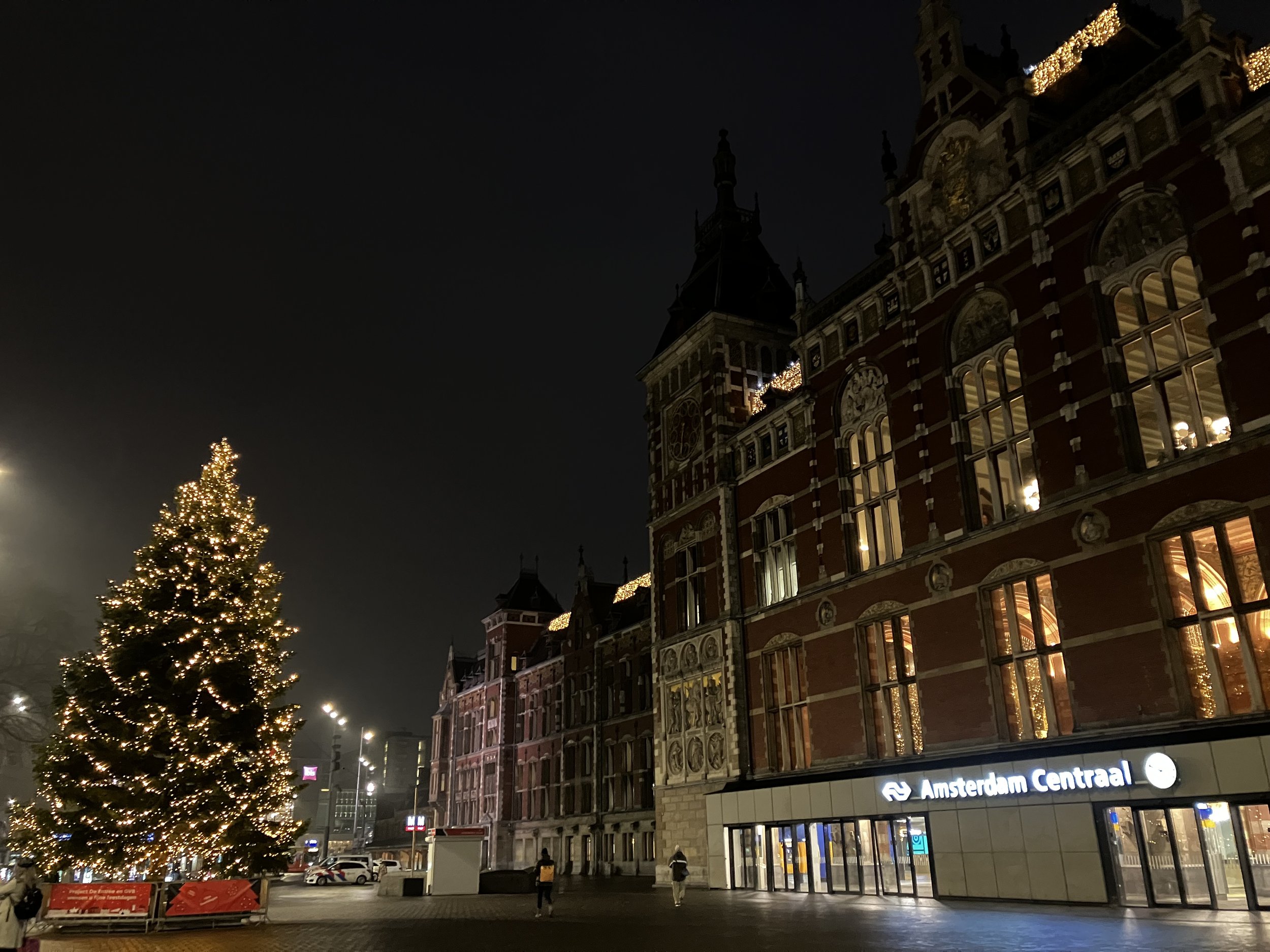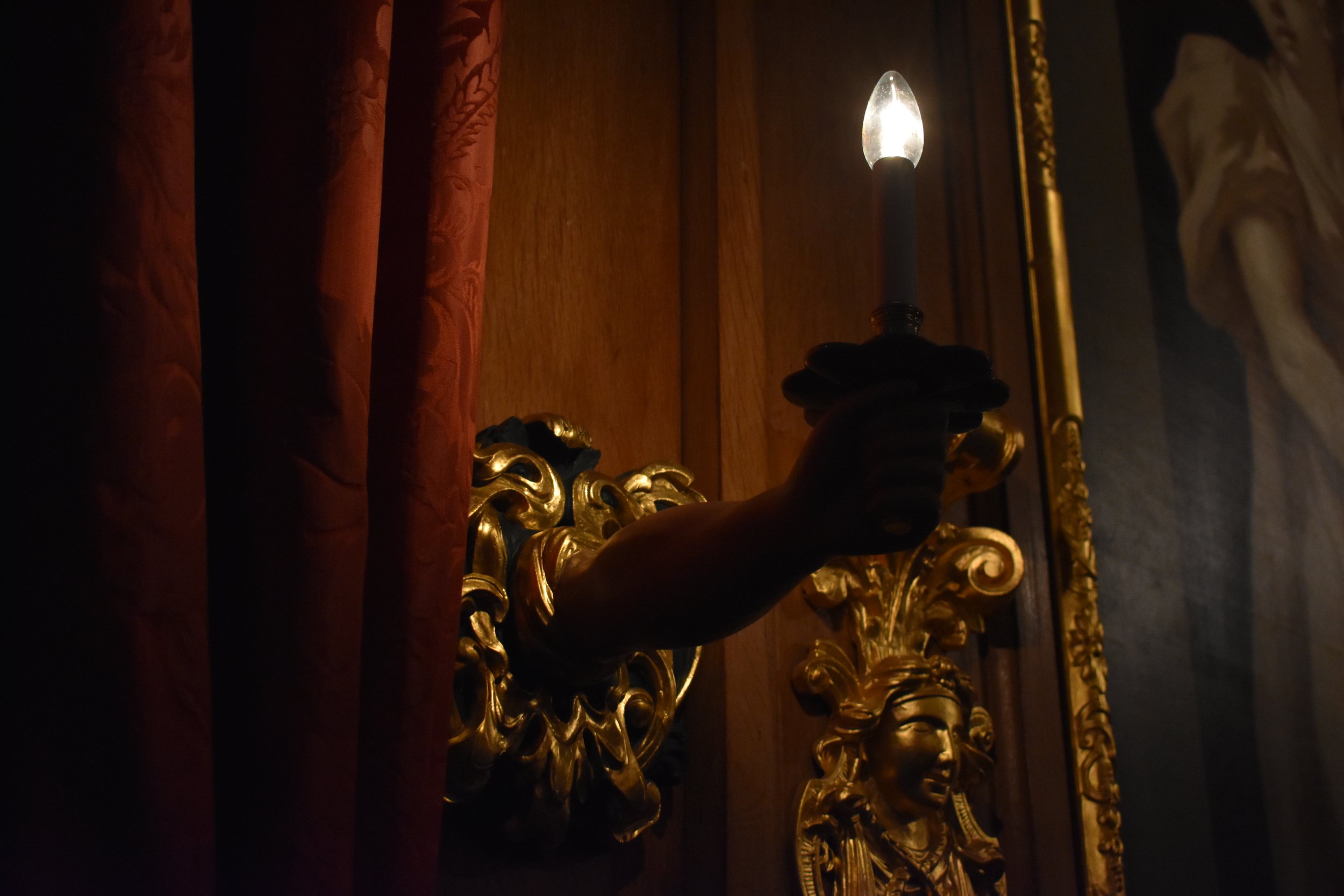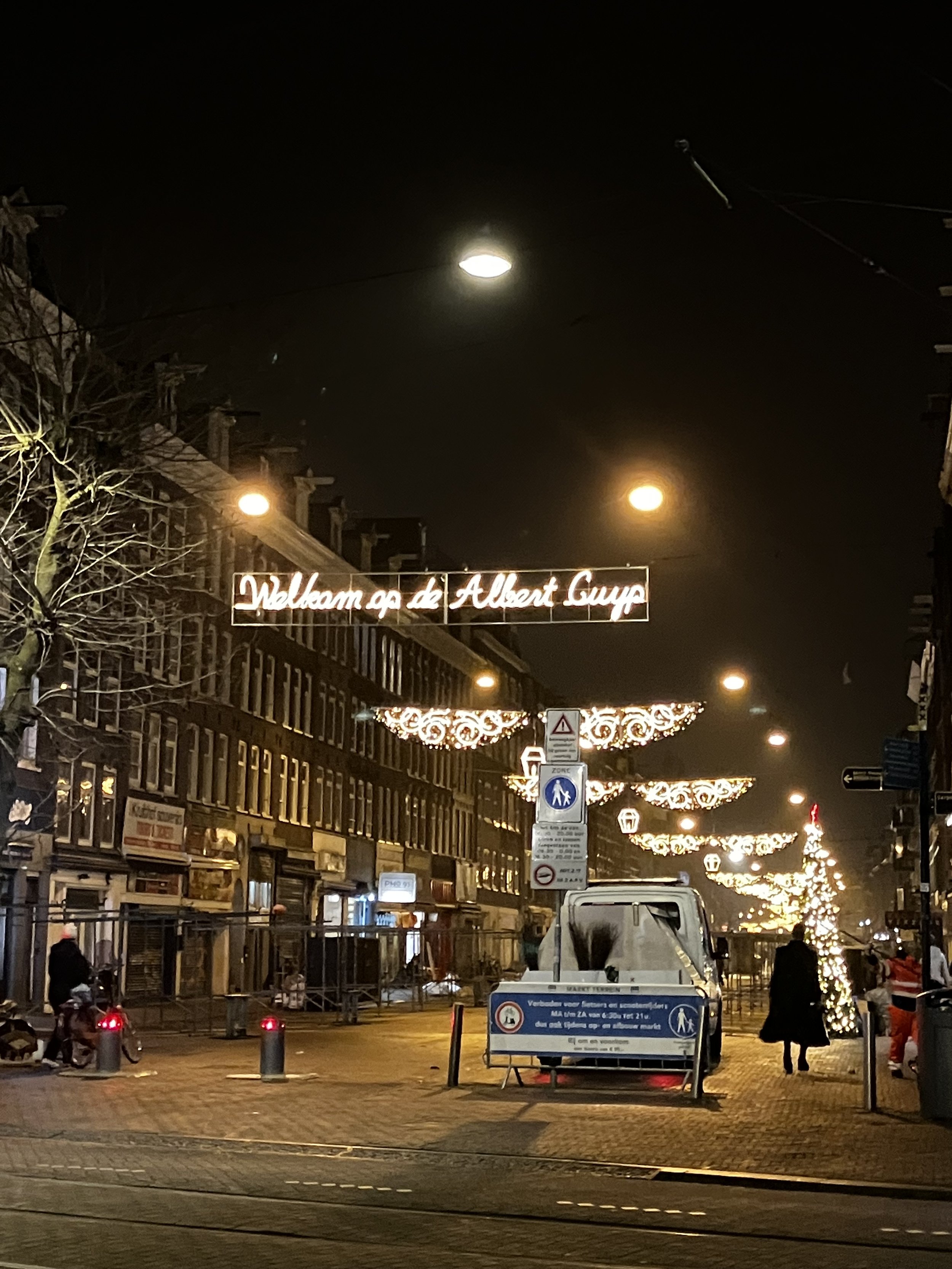A Half-Day in The Hague, Netherlands (Day Three): Mauritshuis & the Royal Christmas Fair
If you missed day two of our Christmas trip to the Netherlands & Belgium, go here.
On day three of our trip, we trekked to Amsterdam Centraal to catch an early train to The Hague, a city most famous for hosting the UN’s International Court of Justice and the International Criminal Court. The city’s name often graced manila envelopes when I worked a summer at an attorney’s office, but I’d not really considered going there until it came up on a list of the best Christmas markets in the Netherlands.
It was a cold day when we departed our train and arrived in what had to be the most gray, commercial, deserted city I’ve ever set eyes on. It was a little after 9 am, and our first goal was to get breakfast. We stopped at a cute looking coffee/breakfast spot where there were a handful of bleary-eyed patrons nursing coffees inside. When we tried ordering food, the server bluntly informed us that there was no hot food, and there wouldn’t be for another half an hour or an hour. I’ll remind you that it was freezing outside, and I was starving. We walked the empty streets until we found the haven of the Golden Arches and resorted to eating a hot breakfast at McDonald’s. I don’t know if people in The Hague don’t wake up until 10 am on Saturdays, or if we were just in a weird part of town, or what, but I still can’t make sense of a breakfast spot having no hot food that late in the morning or the streets being so deserted on a weekend.
Mauritshuis
Our first proper stop in The Hague was Mauritshuis, an art museum focused on Dutch painters. The museum itself is gorgeous, housed in a Dutch Classicist home built during the 1600s. The Mauritshuis was built for Count Johan Maurits of Nassau-Siegen, governor of the colony of Dutch Brazil when it was controlled by the Dutch East India Company. The museum takes care to note that they previously focused on only art history and ignored Maurits’ engagement in transatlantic slavery (at least 24,000 enslaved Africans were transported to Brazil under his authority and he owned dozens of enslaved people). They are now making a conscious effort to shed light on this part of his biography.
The most famous piece in the museum is Vermeer’s Girl With a Pearl Earring. However, I found great enjoyment in all the little oddities to be found here, from hands-holding-candles sconces, to children shaking hands with cats in the backgrounds of paintings.
Peace Palace
After the museum, we headed through town on foot to find the Peace Palace, which houses the International Court of Justice, the Permanent Court of Arbitration, The Hague Academy of International Law, and the Peace Palace Library. Under normal circumstances, I would have done a better job planning this visit (don’t blame me—I’d just spent the past four months preparing for the most stressful exam of my life to qualify to continue through my PhD program!), but as it was, we could only go through the visitor’s center, which included a short (and rather boring) audio tour with some small exhibits (though it was free at least). They are not currently allowing any guided tours inside the palace.
Royal Christmas Fair
From there, our last stop in The Hague was the Royal Christmas Fair. This was a massive market in the middle of the city, with one central avenue lined with booths selling Christmassy goods and food. I can’t remember if it was here or another market in Amsterdam where we had some Pannenkoeken, but they were delicious.
Thanks for reading!
Up Next: Hortus Botanicus, Oude Kerk, & a Day-Trip to Zaanse Schans
























